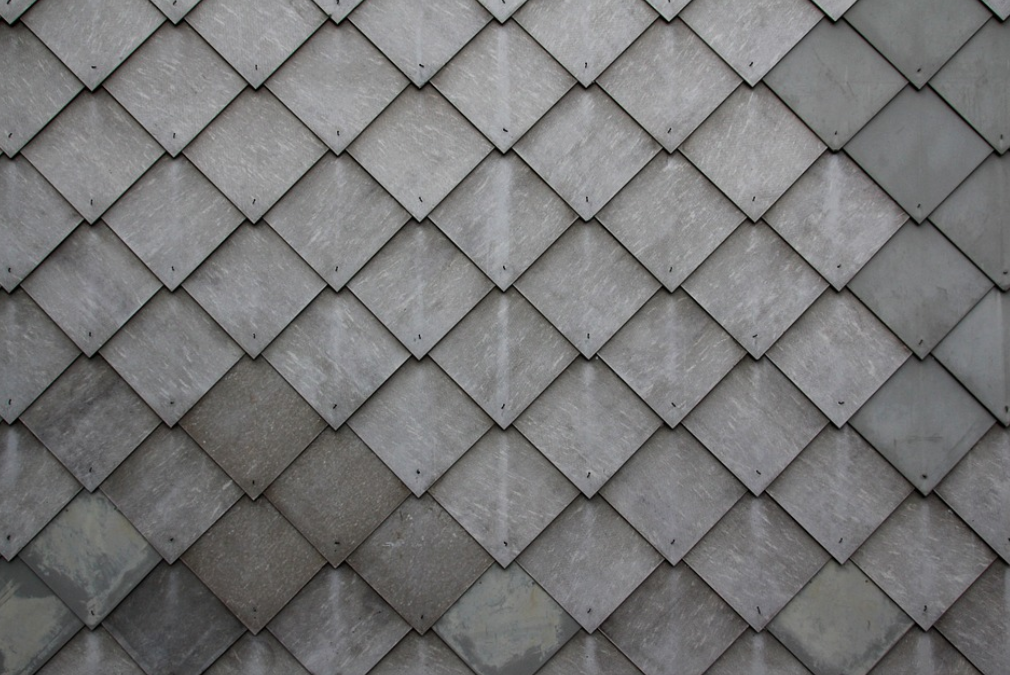Achieving Kitchen Nirvana: The Art of a Gleaming Space through Deep Cleaning
Posted by marycimeni in Roofing on Apr 28th, 2024 | Comments Off on Achieving Kitchen Nirvana: The Art of a Gleaming Space through Deep Cleaning
A kitchen is more than just a place where meals are prepared; it’s the heart of the home, where memories are made, and stories are shared over delicious food. However, with constant use, kitchens can quickly become cluttered and grimy, detracting from their warmth and functionality. That’s where the art of deep cleaning comes in—a transformative process that elevates your kitchen to a gleaming space worthy of admiration and inspiration.
The Philosophy of Deep Cleaning
Deep cleaning transcends the mere surface-level elimination of dirt and grime; it embodies a comprehensive approach to hygiene and well-being within your kitchen sanctuary. It’s a ritualistic endeavor that delves into every corner and crevice, addressing not only the visible remnants of culinary endeavors but also the concealed buildup that lurks in the shadows.
At its core, deep cleaning embodies a philosophy of restoration—a commitment to restoring balance and harmony to the heart of your home. By purging the space of accumulated impurities, deep cleaning revitalizes not just the physical environment but also the spirit of the kitchen, creating a haven of purity and serenity where culinary creativity can flourish.
The Essential Tools of the Trade
Armed with the philosophy of deep cleaning, it’s time to assemble the essential tools that will empower you on your journey to kitchen nirvana. Investing in high-quality cleaning supplies is paramount, as they serve as the instruments through which your vision of cleanliness is realized.
Microfiber cloths, with their unparalleled ability to trap dust and grime, are indispensable allies in the battle against kitchen filth. Multipurpose cleaners stand ready to tackle a myriad of surfaces, from countertops to cabinet fronts, with equal efficacy. Degreasers, potent in their formulation, cut through stubborn grease and grime with ease, restoring shine to even the most tarnished of surfaces. And let us not overlook the humble scrub brush, whose bristles stand as stalwart defenders against the encroachment of dirt and grime.
Yet, in our quest for cleanliness, we must not neglect our own well-being. Protective gear, such as rubber gloves and face masks, shield us from the harsh realities of potent cleaning agents, ensuring that our pursuit of cleanliness does not come at the expense of our health and safety. With these tools at our disposal, we are equipped to embark upon the transformative journey of deep cleaning, confident in our ability to conquer even the most formidable of kitchen foes.
Step 1: Declutter and Organize
A cluttered kitchen not only looks chaotic but also hinders the cleaning process. Start by decluttering countertops, cabinets, and drawers, removing any items that are unnecessary or expired. Organize cookware, utensils, and pantry staples in a logical manner, making it easier to find what you need while cooking and cleaning.
Begin with your pantry and cabinets, removing items one by one and checking for expiration dates. Discard anything that is past its prime or unlikely to be used. Consider donating non-perishable items that are still within their expiration dates but won’t be used in your household.
Next, tackle your countertops, clearing off any clutter and wiping them down with a damp cloth. Pay special attention to corners and edges where crumbs and spills tend to accumulate. Take this opportunity to assess your countertop appliances and decorative items. If they’re gathering dust or taking up valuable space, consider storing them elsewhere or donating them to free up counter space.
Step 2: Tackle the Appliances
Appliances are the workhorses of the kitchen, but they can also harbor grease, grime, and food residue if not properly cleaned. Begin by emptying the refrigerator and freezer, discarding expired items, and wiping down shelves and drawers with a mixture of warm water and mild detergent. For stubborn stains and odors, use a baking soda solution or specialized refrigerator cleaner.
Next, move on to the oven and stovetop, removing burner grates and drip pans to soak in hot, soapy water. Use a degreaser to tackle built-up grease and food splatters, paying special attention to the oven’s interior. Don’t forget about smaller appliances like the microwave, toaster, and coffee maker—wipe them down inside and out to ensure they’re sparkling clean and ready for use.
Step 3: Clean and Sanitize Surfaces
Countertops, backsplashes, and cabinets are hotspots for spills, stains, and bacteria buildup. Start by clearing off countertops and spraying them with a multipurpose cleaner, allowing it to sit for a few minutes to loosen dirt and grime. Use a microfiber cloth or sponge to scrub surfaces gently, paying extra attention to seams and edges where crumbs and spills tend to accumulate.
For tile or stone backsplashes, a mixture of warm water and vinegar works wonders to cut through grease and soap scum. Remember to wipe down cabinet exteriors and handles, as well as drawer pulls and knobs, to remove fingerprints and smudges.
Step 4: Shine Up Sinks and Fixtures
The kitchen sink is a focal point of the room, but it can quickly become stained and grimy with everyday use. Start by clearing out any dishes or debris, then sprinkle baking soda or powdered cleanser in the sink basin and around the faucet. Use a scrub brush or sponge to scrub the sink thoroughly, paying attention to crevices and drains.
After rinsing away the cleanser, polish the sink and fixtures with a stainless steel cleaner or a mixture of vinegar and water for a streak-free shine. Don’t forget to wipe down the faucet handles, soap dispenser, and any other accessories to remove water spots and fingerprints.
Step 5: Finish with Floors
Last but not least, give your kitchen floors some TLC to complete the deep cleaning process. Sweep or vacuum up any crumbs, dirt, and debris, then mop the floors with a solution of warm water and floor cleaner. Pay attention to high-traffic areas and spills, using a scrub brush or mop to tackle stubborn stains.
Once the floors are clean and dry, consider applying a protective sealant to tile or grout to prevent future stains and discoloration. With the floors gleaming, your kitchen deep clean is complete, leaving you with a space that’s not only visually stunning but also hygienic and inviting.
Conclusion
Mastering the art of a gleaming kitchen space requires dedication, attention to detail, and a willingness to roll up your sleeves and get your hands dirty. But the rewards are well worth the effort—a kitchen that’s not only clean and organized but also a source of pride and joy for you and your family. So, the next time you find yourself facing a cluttered and grimy kitchen, remember the transformative power of deep cleaning. By following these steps and embracing the philosophy of cleanliness, you can elevate your kitchen to new heights of beauty and functionality, creating a space where meals are prepared with love and shared with laughter.
Home Maintenance Checklist: Keeping Your Home in Top Shape
Posted by marycimeni in Roofing on Oct 10th, 2023 | Comments Off on Home Maintenance Checklist: Keeping Your Home in Top Shape
Home maintenance is an essential aspect of homeownership that helps protect your investment, ensure your safety, and keep your living environment healthy and comfortable. A well-kept home provides the utmost satisfaction, comfort, and joy. Maintaining your home in top shape requires periodic inspection and timely repairs, which is where a home maintenance checklist becomes invaluable.
Your home maintenance checklist will cover everything from your roof to your basement. The checklist will be divided into tasks that need to be completed monthly, seasonally, or annually. Here’s a detailed guide to help you maintain your home in top condition.
Monthly Tasks
1. HVAC Filters: Regularly inspect the heating, ventilation, and air conditioning (HVAC) system filters. Depending on the air quality in your area and your household’s habits, you may need to change these filters monthly or bimonthly to ensure optimal performance and indoor air quality.
2. Kitchen Appliances: Clean the oven and stove to prevent grease build-up that could lead to fires. Descale the dishwasher and clean the refrigerator coils to improve energy efficiency.
3. Check Safety Devices: Test smoke alarms, carbon monoxide detectors, and fire extinguishers. Ensure they are working correctly and replace batteries or the device as needed.
Seasonal Tasks
Spring:
1. Exterior Inspection: Check the roof for any damage caused by winter storms. Look for cracked or missing shingles and repair promptly to prevent leaks. Inspect your home’s exterior paint for chipping or peeling and schedule a paint touch-up if needed.
2. Landscaping: Clear out dead plants and shrubbery, re-mulch where necessary, and prepare for spring planting.
Fall:
1. Gutters: Clear leaves and debris from gutters and downspouts to prevent water damage. Check for any leaks or damages and make necessary repairs.
2. Heating System: Have a professional service your furnace or heating system to ensure it’s ready for winter.
Annual Tasks
1. Septic System: If you have a septic system, it should be inspected and pumped annually to prevent back-ups and increase the system’s life.
2. Water Heater: Inspect your water heater for leaks or corrosion and drain it to remove sediment. This will help prolong the heater’s life and lower energy costs.
3. Windows and Doors: Check for drafts around windows and doors. Caulk or apply weatherstripping where needed to improve energy efficiency.
4. Pest Control: Even if you haven’t noticed any pests, an annual termite inspection is a good idea to prevent future infestations.
Remember, preventive maintenance is more cost-effective than repairs, and it can add years to the lifespan of your home’s components. This home maintenance checklist can help you prevent small problems from becoming big ones, saving you time, stress, and money in the long run.
By creating and adhering to a robust home maintenance schedule, you can keep your home in peak condition and enjoy the comfort and security it offers. Regularly investing time and effort in maintaining your home is truly worth it, as it will keep your home in top shape, preserving its value for years to come.
Tips When Touring Madagascar for First Timers
Posted by marycimeni in Roofing on Apr 14th, 2023 | Comments Off on Tips When Touring Madagascar for First Timers
Madagascar, the fourth largest island in the world, is a biodiversity hotspot and a must-visit destination for nature enthusiasts. The country is home to unique wildlife, stunning landscapes, and rich culture, making it an ideal destination for first-time visitors. If you’re planning a trip to Madagascar, here are some tips to help you make the most of your experience:
Plan your itinerary carefully
Madagascar is a vast country, and there is so much to see and do. Before you arrive, make a list of the places you want to visit and the things you want to do. You can choose to visit the capital, Antananarivo, and then venture out to the national parks, or you can start your journey directly from the parks. Be sure to research the travel times and distances between each destination to avoid spending too much time on the road.
Be prepared for the climate
Madagascar has a tropical climate, which means it is hot and humid all year round. It’s important to pack light, breathable clothing made of natural fibers, such as cotton or linen. You should also bring sunscreen, a hat, and sunglasses to protect yourself from the sun. If you’re visiting during the rainy season, which runs from November to March, be prepared for sudden downpours and bring a raincoat or umbrella.
Respect the local customs
Madagascar has a rich cultural heritage, and it’s important to respect the local customs and traditions. For example, it’s considered disrespectful to wear revealing clothing or to show public displays of affection. In some areas, it’s also customary to remove your shoes before entering someone’s home. By respecting the local customs, you’ll not only show your appreciation for the culture but also make a positive impression on the locals.
Hire a local guide
One of the best ways to experience Madagascar is by hiring a local guide. A guide can provide you with valuable insights into the local culture and help you navigate through the national parks. They can also help you spot wildlife that you might not have otherwise seen. Be sure to choose a guide who is licensed and experienced.
Sample the local cuisine
Madagascar has a unique cuisine that is influenced by French, African, and Asian flavors. Some of the local dishes to try include zebu steak, a meat dish made from the hump of the zebu cattle, and romazava, a beef or pork stew made with local greens. You should also try the fresh seafood, such as the grilled octopus, which is a popular dish in the coastal towns.
Stay in eco-friendly accommodations
Madagascar is home to some of the world’s most unique and fragile ecosystems, and it’s important to minimize your impact on the environment. There are several eco-friendly accommodations, such as ecolodges and eco-campsites, that use sustainable practices to reduce their carbon footprint. By staying in these accommodations, you’ll not only help protect the environment but also support the local communities.
Learn about the local wildlife
Madagascar is famous for its unique wildlife, including the lemurs, which are only found on the island. There are several national parks where you can observe these fascinating creatures in their natural habitat, such as Andasibe-Mantadia National Park and Ranomafana National Park. The island is home to a diverse range of species, including the famous lemurs, as well as chameleons, geckos, and several species of birds. To make the most of your wildlife experience, it’s a good idea to hire a local guide who can help you spot the animals and provide you with insights into their behavior and habitat. Additionally, it’s important to respect the wildlife and not disturb them by getting too close or making loud noises. By learning about the local wildlife, you’ll gain a deeper appreciation for Madagascar’s unique biodiversity and the importance of protecting it for future generations.
Why You Should Consider Using Shingles
Posted by marycimeni in Roofing on Nov 30th, 2021 | Comments Off on Why You Should Consider Using Shingles
The primary thing you’ll need to think about is the area and use of the development you’re building. Various environments can effectively affect the material you decide to utilize. For instance, a seaside building might require a more solid material to withstand solid breezes, or a metal rooftop produced using copper will go an alternate shading whether it’s presented to pungent air or in an extremely dry environment.
You’ll likewise need to think about the use of the structure; regardless of whether you’re keeping animals inside, or whether you need to guarantee you’re staying away from buildup. This might require an extra defensive covering.
It’s additionally worth contemplating whether you want to give light access through the rooftop, as that could influence which style or materials you’re ready to pick.
What material should I use on a rooftop
There are an entire scope of various choices for roofing materials, and each accompanies its own rundown of upsides and downsides.
Covered rooftops are exceptionally unprecedented in new forms, as they require a great deal of upkeep, they are costly, and can be defenseless against fire harm.
Green rooftops are filling in notoriety as they are considered to be an eco-accommodating choice, yet you additionally need to be careful with the difficulties of waterproofing and guaranteeing you have a thorough establishing system. They likewise should be slowly developed in layers, so it tends to be a tedious interaction.
The most widely recognized roofing materials are tiles (record, mud, or cement being the typical choices), or metal (steel and aluminum are ordinary, however copper and zinc are likewise famous). A large number, sheds, or carports might have a level rooftop that utilizes felt or fiberglass.
Dirt and record tiles have been utilized for quite a long time, and they are likewise extraordinary eco-accommodating choices as they are effectively produced using normal assets, just as being strong. Substantial tiles are roughly 20% less expensive than mud however don’t generally withstand enduring very also. Then again, they are regularly found as interlocking tiles, which rush to lay and are likely the least expensive material choice accessible, in the event that you don’t mind forfeiting excellence for comfort!
Metal rooftops are normally laid in sheets and are reasonable for a wide scope of business, horticultural, and homegrown purposes. They’re speedy to introduce, exceptionally solid, and lightweight, so are an incredible choice for fledglings.
Signs That You Need To Repaint Your Exterior
Posted by marycimeni in Roofing on May 23rd, 2021 | Comments Off on Signs That You Need To Repaint Your Exterior
While paint assists with keeping these surfaces shielded from the components, no surface will keep going forever. You may see breaks in your plaster or indications of spoiling in wood. Now, you’ll need to survey the harm and fix the surface. Whenever this is done, it’s critical to give the house a new layer of paint to guarantee the surface is appropriately shielded from the components.
Thank you to our friends in Arizona at BGB Painting for these painting tips.
The Paint is Beginning to Crack
On the off chance that you spot paint that is stripping, broken, or gurgling, it’s imperative to make a move immediately. When paint strips away, it leaves portions of your home presented to the components. This could cause long haul harm. In the event that the wood is presented to rain or snow, it could prompt shape, buildup, and in any event, spoiling. In the event that you notice any of these indications, it’s a certain sign that it’s an ideal opportunity to give the entire outside of the house a new paint work.
The Caulking is Broken
Caulking is generally around your entryways and windows and is utilized to appropriately seal them. In the event that you notice little breaks there, they can once in a while be fixed by basically filling them in with crisp caulking. Whenever left untreated, this can consider dampness to leak in, which could cause bunches of harm. In the event that you notice bigger breaks, you’ll need to supplant the caulking and add a new layer of paint to give it an additional layer of insurance.
You Can See Stains and Molds
Dampness stains and form are in some cases simply surface stains that can be cleaned away or taken out with pressure washing or some honest effort. Be that as it may, now and then these stains can be indications of more profound harm. In the event that you can’t eliminate a difficult stain, it’s a smart thought to have an expert investigate it. Numerous stains simply should be covered up, notwithstanding, you may have to supplant the material if there is more broad harm.
The Colors Are Starting to Blur
Following quite a while of rising up to rain, snow, and exceptional daylight, all things considered, your outside paint will begin to blur. Blurring is considerably more than simply a stylish issue—it’s regularly the main sign that your paint work is done giving the insurance your home necessities. On the off chance that you notice the shading is looking somewhat dull or level, it’s a happy chance to consider a new paint work. Not exclusively will you give your home a facelift, however you’ll likewise be keeping it better shielded from the components.
The Color Does Not Look Attractive to you Anymore
Now and then the need to paint the outside of your house is absolutely a stylish one. On the off chance that the house was painted in even more a pattern shading the last time it was done, it might begin to look somewhat dated. At the point when you’re prepared for something new, ensure you set aside the effort to pick the correct shading for your home’s outside. All things considered, it’s a great deal of work to repaint an entire house on the off chance that you conclude you don’t care for the shading. Consider the style of your home, the shading range of different homes around there, and the general climate. More tips on picking outside paint tones can be found here.
